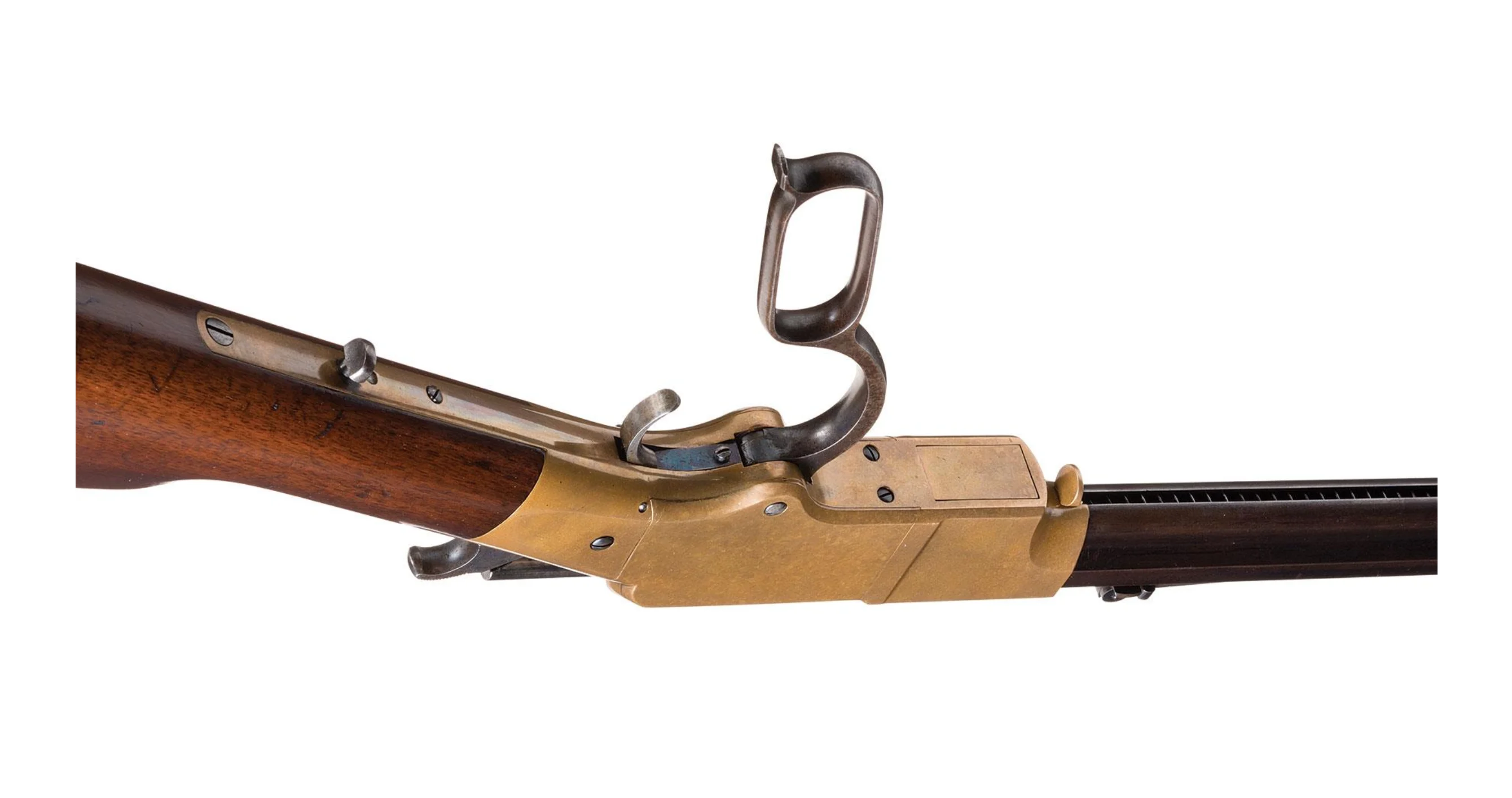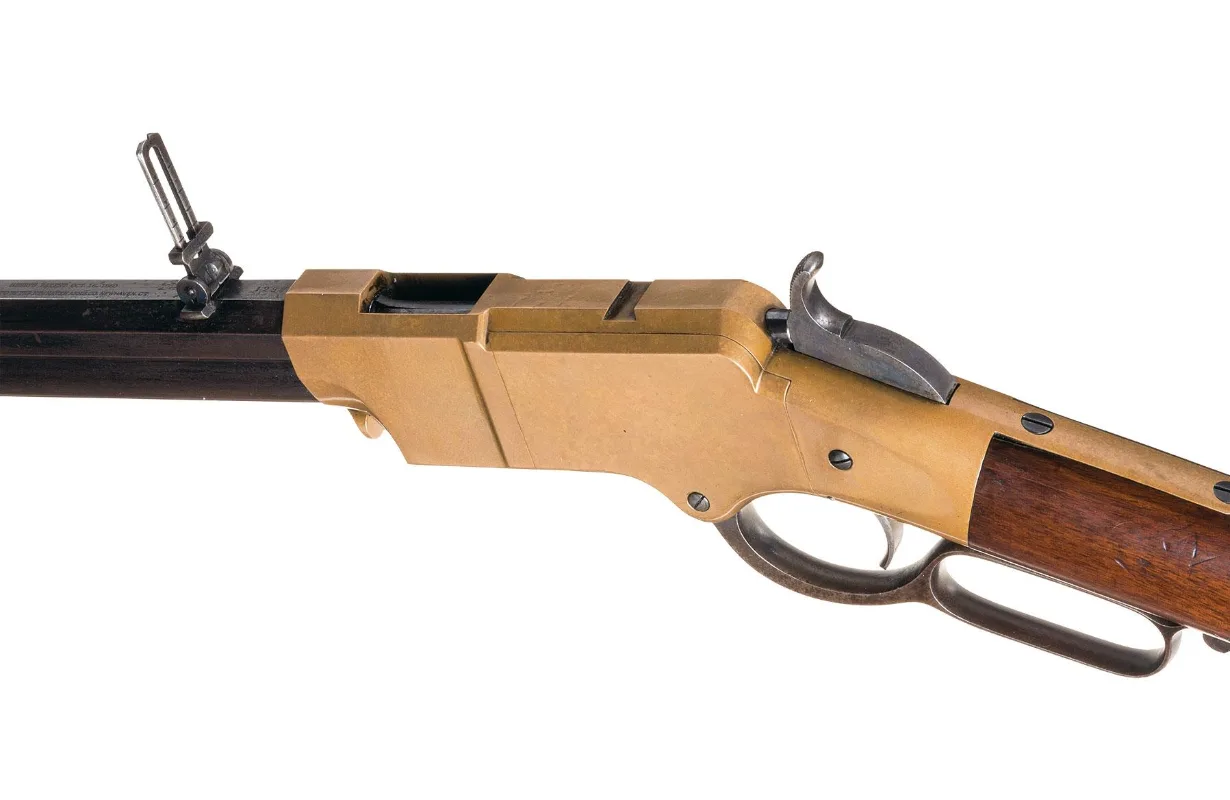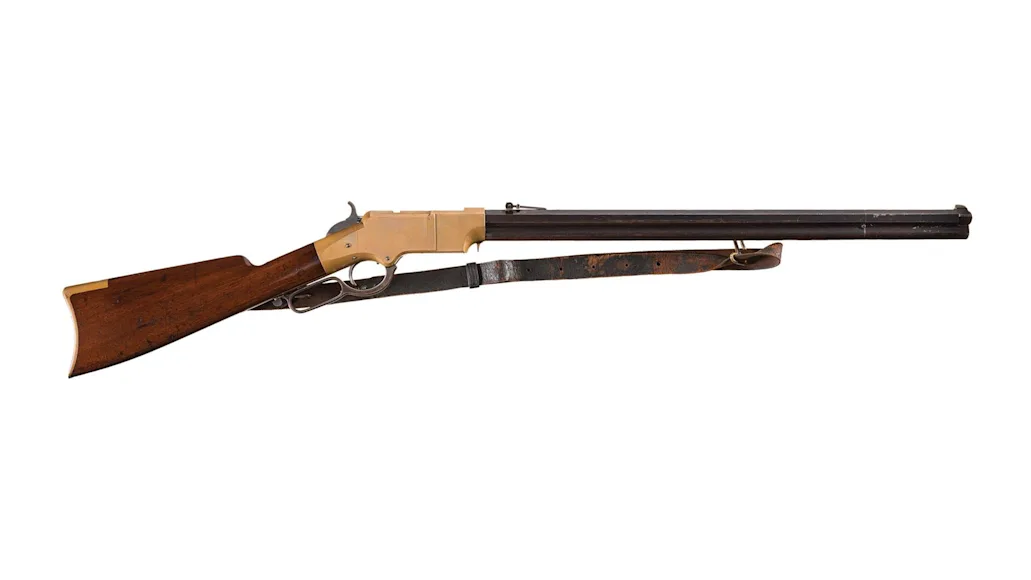_We may earn revenue from the products available on this page and participate in affiliate programs. Learn more ›
_
To paraphrase Mark Twain’s quote, reports of the lever-action’s death are greatly exaggerated. In the last several years we’ve been greeted by a revived Marlin 1895
, a risen-from-the-dead Marlin 336
, and the just-born 360 Buckhammer cartridge
which is designed for lever guns. This doesn’t sound like dead to me.
And I’m no longer seeing racks of used Savage Model 99s and Winchester 94s and old Marlin 336s on sale at pitiful used-gun prices. Somebody bought them. There’s a reason for this. Lever-action rifles are terrific for real-world hunting. That’s why Winchester has sold 7 million Model 94s and Marlin sold close to 4 million Model 336s.
The lever gun has been around a long time. Early in the 19th century, people were good and sick of standing with one shot between them and hell, and it was inevitable that someone was going to invent a repeating rifle. In 1836, an inventor named Johann Nicolaus Von Dreyse invented a bolt-action—the so-called “needle gun”—that used paper cartridges. It was issued to the Prussian Army and enabled Prussian grenadiers to shoot more French soldiers than single-shot muskets would permit. So successful was Von Dreyse’s invention that for the rest of the 19th century, Europe remained committed to the bolt-action.
America saw things differently. From the outset, we were a lever-action nation, and the origin of the breed was the Colt Ring Lever Rifle, First and Second Models, a firearm of breathtaking obscurity of which only 700 were made between 1837 and 1841. It was a percussion arm, and its lever was in the shape of a small ring located ahead of the trigger guard. When you pulled down on the ring it indexed a revolving cylinder to the next chamber and cocked an internal hammer. Both models were complicated and unreliable.
The Spencer, patented in 1860, was a different story. It was a .52-caliber rimfire repeater made in rifle and carbine configurations, just in time for the Civil War. Christian Spencer’s design held seven cartridges in a spring-loaded magazine in the buttstock. To operate, you dropped the lever which lowered the breechblock and ejected the case, and lifted it, which picked up a fresh cartridge and raised the breechblock. The hammer had to be cocked separately. (You can see Clint Eastwood operating a Spencer with fine style in the film, Unforgiven.)
Spencer lever action rifles could pour out the lead. In 1863, Abraham Lincoln ordered Spencers to be issued to Union troops, but they could not be made in sufficient numbers, and the muzzle-loading Springfield Rifle Musket remained the main arm of the boys in blue.
How the First Lever Action Rifle Got its Start

Rock Island Auction Company
When the Civil War ended, the bottom fell out of the market for Spencers. But waiting in the wings was the first lever action rifle as we know it, the Henry repeater.
In 1855, a shirtmaker named Oliver Winchester bought a controlling interest in the Volcanic Repeating Arms Company, which made lever-action rimfire rifles and pistols, both of which left a great deal to be desired, mostly due to rotten ammunition. Volcanic tread along the edge of bankruptcy and, in 1857, Winchester reorganized it, re-naming the firm the New Haven Arms Company.
Things did not improve. Winchester was a marketing man who knew not from firearms. But he was not stupid. In 1858, he hired one B. Tyler Henry to manage the New Haven Arms plant, and very shortly thereafter, told Henry to redesign his guns so they worked. Winchester picked the right man. Henry was not only experienced with firearms but a mechanical genius as well. He scrapped the pistol and redesigned the rifle and the copper-cased .44 rimfire cartridge it fired. His improved rifle employed a new, stronger bolt and a firing pin that hit the case rim at two points simultaneously.

Rock Island Auction Company
The Henry lever-action rifle was patented early in 1862, just as the Civil War was heating up. The gun was a revelation. It held fifteen rounds in a tubular magazine beneath the barrel. A competent shooter could manage 120 rounds of sustained, aimed fire from a Henry in five minutes and 40 seconds, which included loading time. This was one shot every 2.9 seconds, as opposed to one shot every 20 seconds for a soldier armed with a rifle musket.
The .44 Henry cartridge, however, was underwhelming. Tyler Henry’s design utilized a 216-grain lead bullet propelled by 26 grains of black powder to 1,200 fps. The round supposedly packed enough steam to be lethal at 1,000 yards, but I’m told by an acquaintance who has shot it a lot that the actual effective range is 150 yards. A .58-caliber Minie ball, fired from a Springfield Rifle Musket, on the other hand, could hit what a soldier aimed at from 400 yards and in volley fire, from much farther than that.
As the Civil War progressed, it became obvious that long-range accuracy was not nearly as important as the ability of soldiers to fill the air with lead, and the volume of fire in major battles was simply terrific. At the Wilderness, a 22-inch-diameter oak tree was reduced to a riddled stump by Minie balls. At Gettysburg, during [Pickett’s Charge](https://en.wikipedia.org/wiki/Pickett%27s_Charge#:~:text=Pickett's%20Charge%20(July%203%2C%201863,Pennsylvania%20during%20the%20Civil%20War.)
, rail fences were chewed to splinters.

Rock Island Auction Company
Unlike the Spencer, the Henry lever-action rifle was never issued to Federal soldiers, but it was no secret that it was far better to have 15 shots at your immediate disposal than one. The Henry was made a success by the then-common practice of state militias rather than the Federal government arming their troops, so lucky Yankee militiamen marched off to war with Henrys rather than Springfields. Also, it was common for soldiers—officers and enlisted men alike—to buy their own weapons. The original price of the rifle was $40, which is well over $1,000 today, but of the 14,000 that were made, it’s estimated that 10,000 Henrys served with the boys in blue.
The Civil War Ends
The Civil War ended with the Henry, not the Spencer, as the pre-eminent repeater, and as the great movement West began, everyone wanted one. Oliver Winchester was equal to the moment. In 1866, he closed down New Haven Arms and founded Winchester Repeating Arms Company.
**Read Next: The 8 Best Lever Action Rifles Ever Made
**
To go with the new name there was a new rifle. B. Tyler Henry had designed a stronger version of the Henry rifle called the Winchester Model 66—Yellow Boy, it was called because of its brass frame. If the Henry had been a company-saver and a success, Yellow Boy became a legend, the first in a series of Winchester lever-action legends.
And Yellow Boy’s designer was not forgotten. At the end of 1866, B. Tyler Henry retired, but to this day if you look at the base of a Winchester rimfire case, you’ll see the letter H. It’s there in honor of the man who created the lever gun as we know it.


